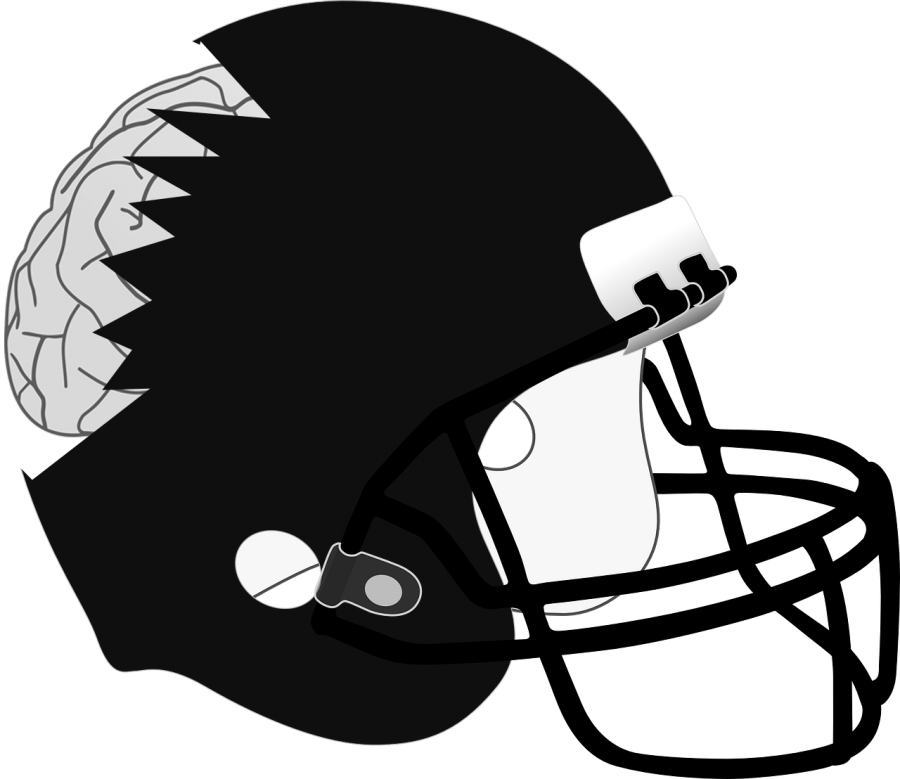Every Sunday with every drive and every snap, NFL players put their physical health on the line and sacrifice their bodies for one thing: the win.
Hitting is part of what makes the game exciting. The resounding crack of a helmet meeting shoulder pads that echoes throughout the whole stadium sending the entire crowd into a series of both cheers and cringes is part of the beauty of football.
Although it’s exciting, there are few things more dangerous than taking a hit to the head from an NFL defensive player running at full speed.
In recent years, the NFL has begun “cracking down” on helmet-to-helmet tackling, targeting and roughing the passer calls in an effort to protect quarterbacks and other offensive players from head injuries.
However, it still seems that players are suffering from concussions left and right, and the million dollar question remains: is the NFL doing enough to protect its athletes?
Of course, realistically, you can never completely eliminate head injuries from football. Helmet to helmet contact happens at the line of scrimmage on every play.
But still, why is the number of concussions increasing instead of diminishing?
A whopping 271 diagnosed concussions were reported in the 2015 season around the NFL, which is quite a significant rise from the 206 reported in 2014.
You would think based on the new focus on protecting players and the ban on helmet to helmet hits beginning in 2013, the number would decrease, but this is not the case.
We all remember 2013 and the $765 million dollar settlement the NFL dealt to over 4,500 ex-players who sued the leagues because they claimed the NFL knowingly concealed the medical dangers of concussions and rushed players back on the field too soon after sustaining head injuries.
CTE (Chronic Traumatic Encephalopathy) is a degenerative brain disease similar to Alzheimer’s, primarily caused by repeated head trauma. It’s no coincidence that CTE has been found in the brains of a staggering 90 out of 94 deceased NFL players (famed linebacker Junior Seau being one of them).
But as CTE can only be completely seen in the brain tissue after death, it is difficult to diagnose.
Still, doctors believe a good number of living, former players such as Walter Payton and Tony Dorsett suffer from the disease.
After years of denying the medical evidence, the NFL finally admitted a link between CTE and football as of April 2016.
As recent medical advancements shed light on the issue and in order to make sure players do not return to the game until it’s safe, all players must now go through a complex concussion protocol if there is any suspicion they may have sustained a concussion.
Still, some coaches do not report the concussions in the hopes of keeping their best players out on the field for more plays and even risk getting disciplined and fined by the league just for the one win.
Many fans believe that the new rules the NFL implemented to protect players is making the league “soft.”
Fans love to see brutal, crushing hits, and it’s a big part of the reason people watch football in the first place, but players’ safety must be addressed.
When you look at the big picture, football doesn’t last forever. Players usually are out of the league by age 35-38, leaving them the rest of their lives to do other things.
As fans, we tend to be selfish. Players getting injured produces excitement, and it is almost like the players we are watching are not real people but rather pawns or game pieces used for our own entertainment.
But when you look at players such as legendary running back Tony Dorsett (now 62 and struggling with signs of CTE) who has said he can’t drive his school-age daughters to soccer practice without forgetting where he’s going or that he has constant thoughts of ending his own life, it’s definitely scary. And he’s not the only one.
Former famous athletes are people too, and they deserve a fulfilling life long after hanging up their cleats.
The long term effects of concussions in the NFL are devastating, and it’s something much bigger than the game of football.

